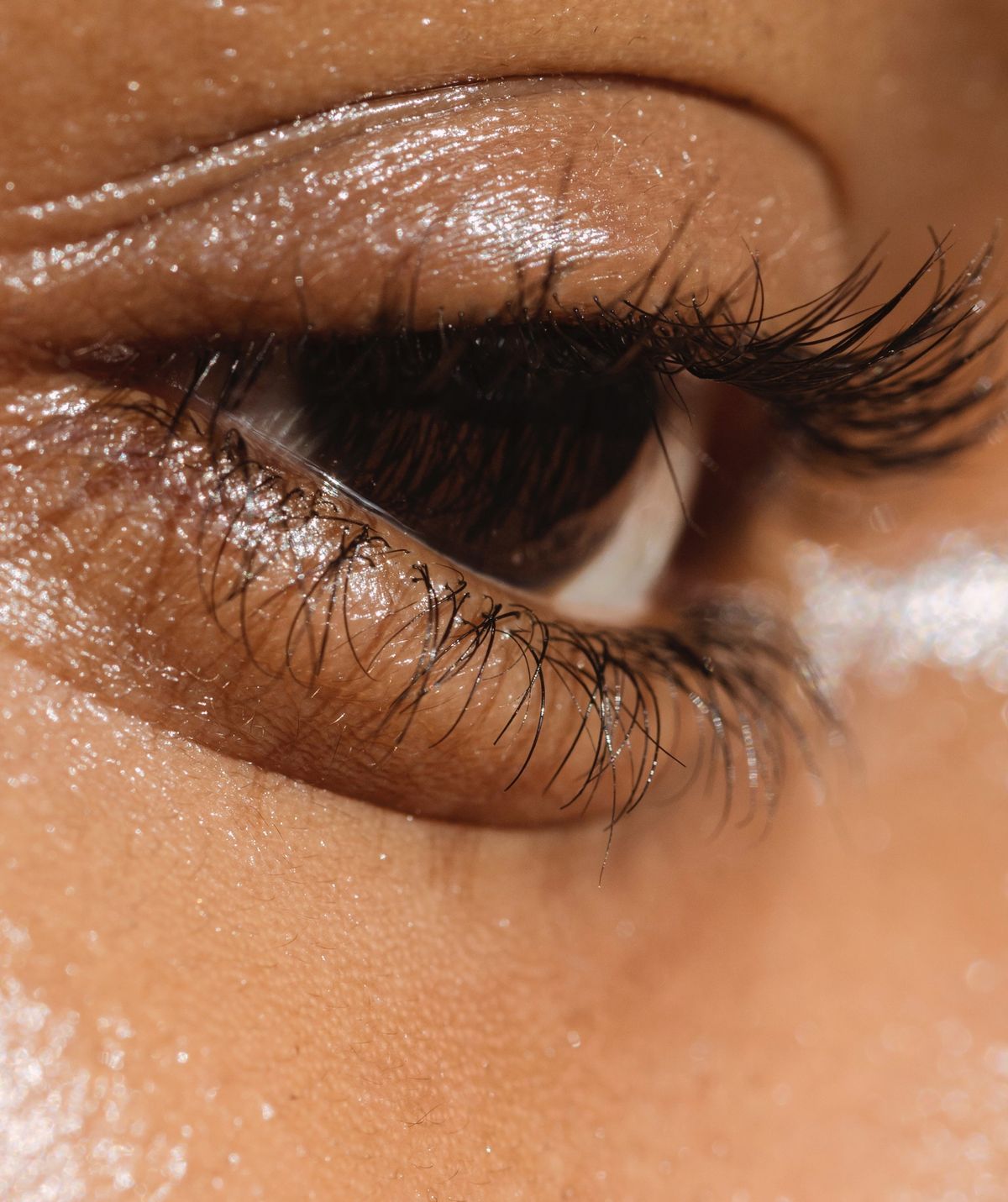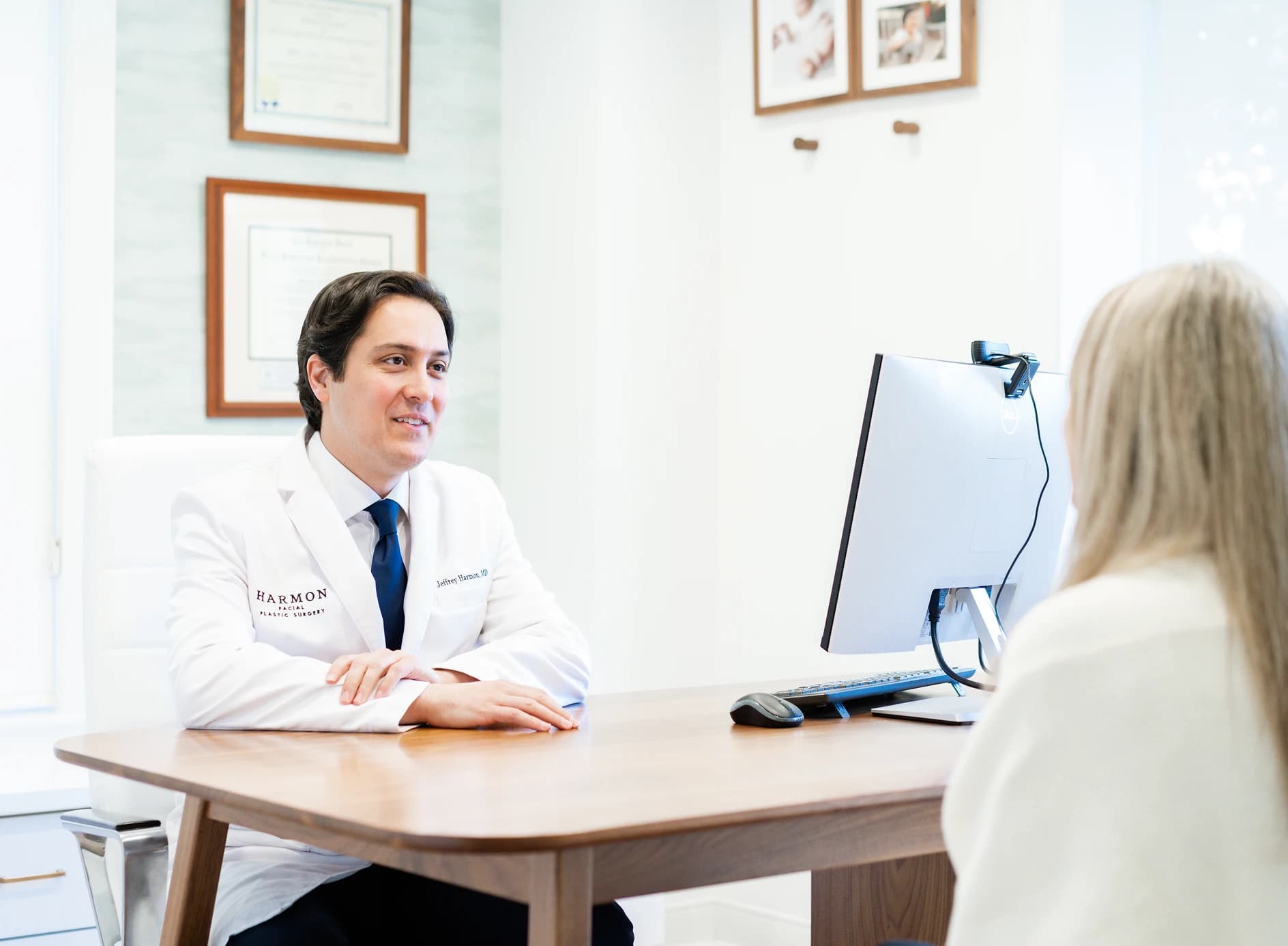
There are two different bags that can develop in the lower eyelid/cheek region which people request treatment for. These are (1) lower eyelid bags created by fat that has started to prolapse out against the eyelid and (2) festoons, also known as malar bags, which are pockets of swelling located at the eyelid/cheek interface below the lower eyelid bags. Each requires different surgical approaches to treat. The treatment for one does not treat the other. As always, an in-person consultation with a qualified medical professional is essential prior to considering facial plastic surgery. It is important to determine whether the area of concern is related to lower eyelid bags or festoons/malar bags. It is important to seek not only a fellowship-trained but also a double board-certified facial plastic surgeon if you have aesthetic concerns about your face and/or neck.
Lower Eyelid Bags are Caused by Pseudo Herniated Fat and Can be Treated with Lower Eyelid Surgery (Blepharoplasty)
Lower eyelid surgery (blepharoplasty) can treat multiple aspects of age-related changes to the eye. Though redundant lower eyelid skin and loose or “blousy” muscle can be improved with lower blepharoplasty, the primary reason lower eyelid surgery is performed is to treat lower eyelid bags. These bags can leave a heavy, tired appearance in the eyes that makes the face appear significantly older. These bags are caused by fat in the lower eyelids – which is normally held in place by a “wall” called the septum – pushing the septum forward such that the fat hangs over the tear trough and cheeks.
Festoons are Also Known as Malar Bags and Can Be Treated with Direct Excision
We are not certain what causes festoons, the watery swelling around the lower end of the lower eyelids at and around the junction with the cheek. The swelling demonstrates characteristic slightly translucent skin with occasional redness. Individuals can have both lower eyelid bags and festoons at the same time. The most common approach to treating festoons, especially severe festoons, is by directly excising them along with the skin. This does, however, leave a potentially obvious scar at the junction between the lower eyelid and cheek. There can also be prolonged swelling of this site after surgery, presumably due to the same process that causes the festoons themselves.
It is Important to Distinguish Between Pseudo Herniated Fat and Festoons/Malar Bags to Determine the Most Appropriate Surgical Treatment
The approach to lower eyelid surgery (blepharoplasty) at Harmon Facial Plastic Surgery is through fat preservation, where the fat in the lower eyelid is preserved and simply reoriented to a more anatomic region where youthful volume can be preserved and the transition from the lower eyelid to the cheeks smoothed. This contrasts with older approaches that simply remove the lower eyelid fat and/or add fat transferred from other parts of the body to the lower eyelids. It is important to counsel patients that lower eyelid surgery (blepharoplasty), even fat preservation lower eyelid surgery (blepharoplasty), does not treat festoons/malar bags.
Trust Your Face to a Facial Plastic Surgeon
It is important to seek a fellowship-trained specialist in plastic surgery of the face and neck when you have concerns about your face or neck.
Why Choose Dr. Harmon
- The mission of Harmon Facial Plastic Surgery is to help people along their journey towards self-confidence, to feel good about feeling good.
- Dr. Harmon is a double board-certified facial plastic surgeon
- Dr. Harmon values making patients feel welcomed, listened to, and respected.
- Dr. Harmon graduated with honors from Cornell University with a Bachelor of Science degree in molecular biology.
- Dr. Harmon earned his medical degree from the University of Cincinnati.
- Dr. Harmon underwent five years of extensive training in head at neck surgery at the prestigious residency program at the University of Cincinnati.
- Dr. Harmon then underwent focused fellowship training in cosmetic facial plastic surgery through the American Academy of Facial Plastic and Reconstructive Surgery (AAFPRS) with the world-renowned surgeon, Dr. Andrew Jacono, on Park Avenue in New York City.
Request a Consultation
Request a consultation with Dr. Harmon at Harmon Facial Plastic Surgery in Cincinnati. Visit our clinic. You will learn more about Dr. Harmon’s credentials, style, and approach. Build a relationship with our dedicated team. Do not stop searching “plastic surgery near me.” Get in touch with us to learn more.
Disclaimer
This blog post is for educational purposes only and does not constitute direct medical advice. It is essential that you have a consultation with a qualified medical provider prior to considering any treatment. This will allow you the opportunity to discuss any potential benefits, risks, and alternatives to the treatment.

Book Your Consultation
Take the first step toward enhancing your natural beauty by scheduling a personalized consultation with Dr. Jeffrey Harmon. As a double board-certified facial plastic surgeon trained by the pioneer of the extended deep plane facelift, Dr. Harmon offers expert guidance and care. Whether you're considering surgical or non-surgical options, our team is here to support your journey to renewed confidence.